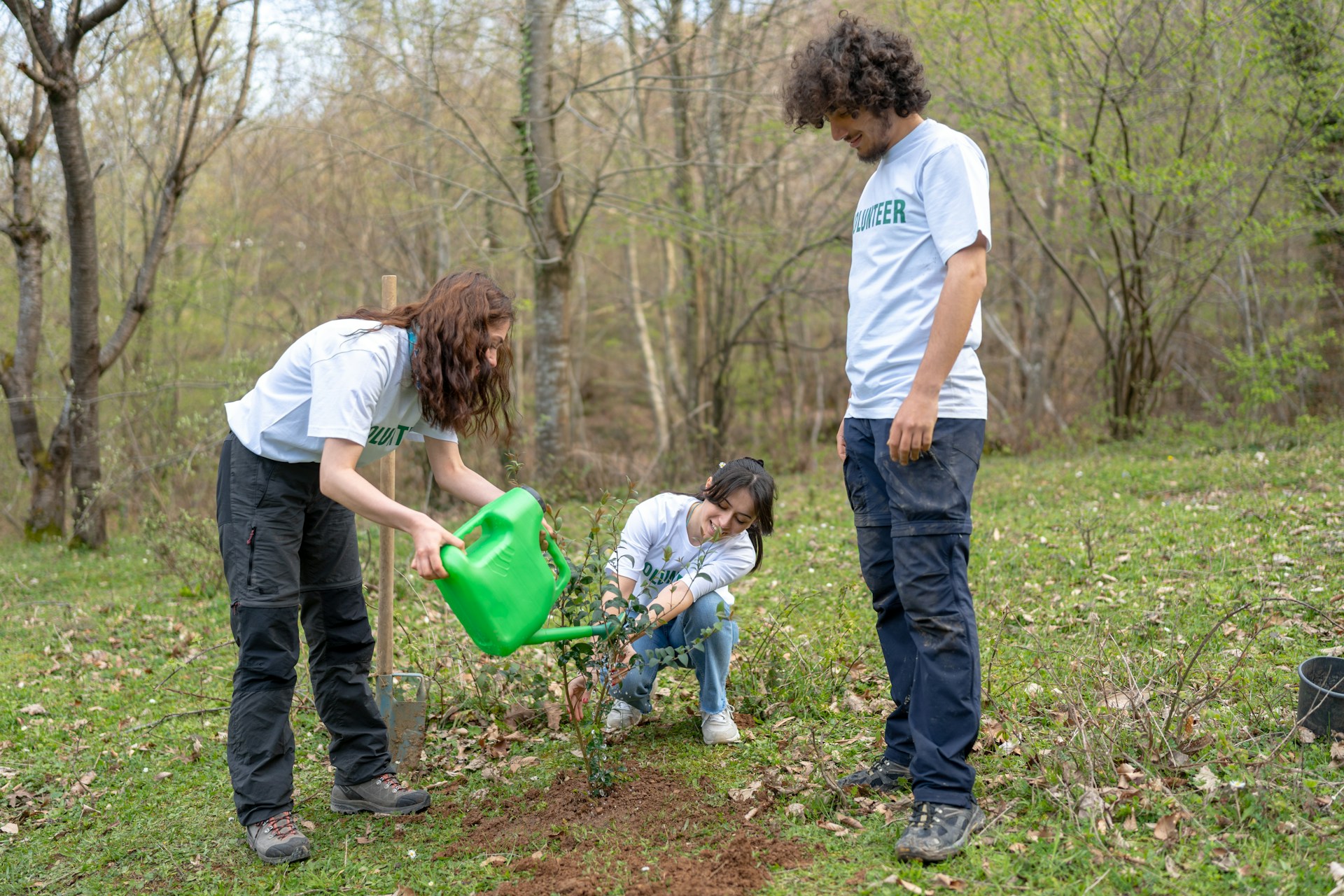Employee volunteer programs play a big role in boosting workplace morale and creating stronger connections between coworkers. When people come together to volunteer, it does more than just support their community. It builds friendships, strengthens communication, and creates a stronger sense of purpose at work. These programs aren't just about giving back. They're about working together for something bigger than a paycheck.
Even with the many upsides, not every company sees a high turnout for volunteer opportunities. Sometimes employees feel too busy, unsure of how to get involved, or disconnected from the causes being supported. That’s why increasing participation matters. When more people show up, the impact grows, both inside and outside the workplace. The challenge is finding the right ways to encourage involvement without making it feel like a chore.
Understanding CSR And Employee Engagement
Corporate Social Responsibility, or CSR, is a way for companies to take ownership of how they affect the world beyond making money. It's not just about giving to charity or planting trees once a year. It's about making choices that show social and environmental awareness while staying true to company values. A strong CSR approach helps businesses earn trust and feel more connected to the communities they serve.
One important part of CSR is how it connects to employee engagement. When a company makes volunteering part of its structure, it gives employees a new way to feel involved. Instead of seeing their job as something they just clock in and out of, workers get a chance to be part of something meaningful. That leads to more pride in their company, stronger teamwork, and a better workplace overall.
Volunteer programs that are well planned can support CSR employee engagement. When people volunteer through their job, they’re more likely to feel loyal, energized, and part of a shared mission. It shifts the tone at work in a positive way, making employees feel like their role counts not just for the company but for the greater good.
Benefits Of High Participation Rates
Getting more employees involved in volunteer programs can make a big difference for teams and company culture. It's not just about checking a box. When participation goes up, the overall impact of the program improves, and so does the employee experience.
Here are a few benefits companies often see when participation rates are high:
1. Stronger team connections: Volunteering gives people a chance to work together in a non-work setting. This helps coworkers bond and build trust.
2. Higher company morale: When employees feel good about their contributions outside of work, it often boosts their job satisfaction too.
3. Improved leadership skills: Employees who lead volunteer projects often grow their confidence and communication abilities.
4. Better company reputation: A business with strong community involvement tends to be more respected both inside and outside the organization.
5. Broader diversity of ideas: Employees from different positions or backgrounds can come together during volunteer events, leading to fresh insights and wider collaboration.
When people see that their work environment supports causes they care about, it increases their sense of belonging. Whether it's cleaning up local parks or teaching classes at a community center, shared volunteer experiences can spark new energy in the workplace. Sometimes, it’s just about showing up together.
Strategies To Increase Participation
Raising participation in employee volunteer programs starts with making them more accessible and engaging. Employees need to feel like their time and effort matter, without adding stress. Start with clear communication. Let people know what's happening, when it's happening, and why it matters. Without that, even the most thoughtful volunteer program can fall flat.
Offer flexible options. Not every event has to be in person or take a full day. Consider short projects, virtual opportunities, or team-led initiatives that make it easier for people to join at their pace. One company noticed a spike in sign-ups after adding a bring-a-friend community clean-up that lasted just two hours during the lunch window. Sometimes, lowering the time barrier can make all the difference.
Here are more practical ideas to boost involvement:
- Highlight real stories. Share photos, quotes, or short videos from past events through internal newsletters or channels. People connect with people, not just flyers and sign-up forms.
- Lead by example. When managers and executives show up, it sends a clear signal that volunteering isn’t just encouraged, it’s valued.
- Offer paid volunteer time. Let employees use a few hours or a day each quarter to support a cause of their choice without using their personal time off.
- Set team goals. Turn volunteering into a friendly competition. Who can log the most hours or engage the most departments? Offer small prizes or public recognition.
- Ask for input. Let employees suggest causes they care about. When they help shape the program, they’re far more likely to take part.
Keep the sign-up process simple. If getting involved takes more than a few clicks, interest drops fast. A thoughtful and inclusive approach leads to long-term success.
Promoting The Volunteer Programs
Once a program is up and running, visibility keeps it alive. If no one hears about upcoming opportunities, participation will stay low no matter how well organized the events are. Treat volunteer program announcements like internal campaigns. The message needs to reach people in ways that grab their attention and feel relevant.
Use team meetings to spotlight upcoming volunteer events. Leaders can take a minute or two to mention what's planned and why it matters. Hearing about it directly often makes more impact than a buried email update. Other effective ways to spread the word include:
- Posting on internal platforms like intranets or collaboration tools
- Creating a monthly volunteer calendar
- Featuring a Volunteer of the Month segment on internal newsletters
- Asking leaders to personally invite team members or bring it up during one-on-ones
Some employees might need a nudge through a more personal approach. Encouragement from a peer or a supervisor can go a long way. Try assigning departmental volunteer coordinators to help keep the program visible and approachable.
Cross-team collaboration also works well. Get different departments to co-sponsor an event. When more areas of the company are part of the planning and promotion, participation naturally spreads. Multiple touchpoints mean more chances to get people interested and involved.
Building A Culture Of Volunteering
For volunteer programs to really stick, they need to be more than a one-time event. They need to be part of how the company thinks and acts. That starts by making volunteering a part of the company’s values, conversations, and expectations.
Make events regular, not just once or twice a year. A monthly or quarterly rhythm keeps the program top of mind. Employees start to build a habit when they see continuous chances to give back. Offer different kinds of events that let people contribute in their own way. That might mean mentoring, event setup, planning, or skill-based volunteering.
Recognition also helps motivate people. It doesn’t have to be big or flashy. A thank-you note from a team leader or shoutout in a meeting goes far. A wall of appreciation, digital badges, or small signs of gratitude show that participation matters.
Here are a few more ways to reinforce a culture of giving:
- Add volunteer goals to performance reviews if an employee wants it
- Share success stories during all-hands meetings to inspire others
- Connect volunteering to larger company goals or values
- Ask for feedback after events to make the experience better over time
When people expect and look forward to volunteering, it stops feeling like an obligation or side task. It becomes part of the company’s identity.
Creating Lasting Impact Through Engagement
Increasing participation in employee volunteer programs takes more than a flyer or one-off event. It means building trust, giving employees real ways to get involved, and showing them their time matters. Every small effort—from promoting an event to recognizing a volunteer—adds to a long-term culture of giving.
When companies make these programs easier to join and more rewarding to stick with, it shows up in the way people work together. Teamwork gets stronger, morale grows, and the energy across departments feels more connected. A consistent and people-first approach can turn volunteering into one of the most meaningful parts of the employee experience.
It’s more than doing good. It becomes how a company stays connected to its people and community.
Explore how using effective strategies can strengthen CSR employee engagement in your company. When you embrace meaningful volunteer initiatives, the benefits ripple through your workplace, positively impacting morale and collaboration. Let Chezuba help you integrate these initiatives into your business and create a thriving workplace culture.


















.jpg)

































.webp)
.webp)
















































